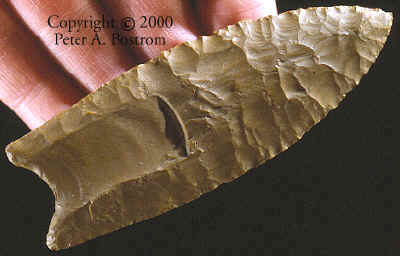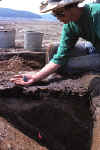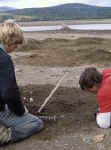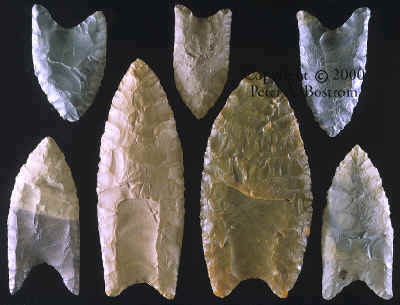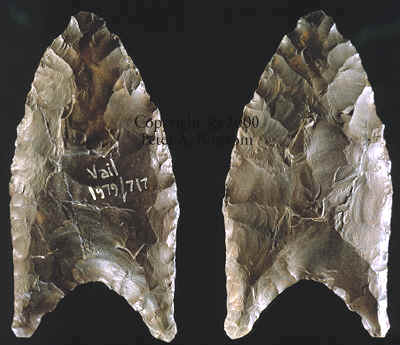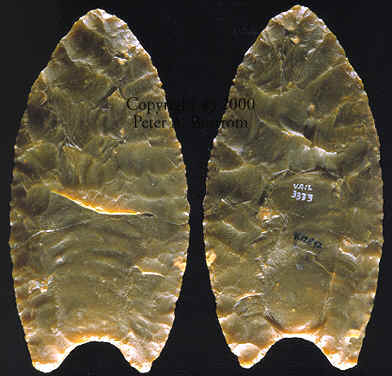|
EASTERN STYLE
DEBERT/CLOVIS
POINT
by Michael Gramly PhD.
This finely
crafted fluted point was discovered in 1980 along with nine other similar
projectile points at a presumed kill site approximately 250 m west of the Vail
Paleo-Indian encampment. This specimen (V.5581) was presumably lost during a
hunt for caribou moving along the Magalloway River Valley, upwind of the Vail
habitation site. Radiocarbon dates from the Vail site indicate that this hunt
took place 10,500 to 11,000 years ago. by Pete Bostrom Debert "fluted" points were named by George F. McDonald in 1968 for examples found on the Debert site in central Nova Scotia. These deeply concave base points are found mainly in Nova Scotia and Maine. Many of the fluted points found on the Vail site are classic examples of Debert points. The bases with long delicate "ears" are similar to bases on many Dalton points. This Debert/Clovis point, number V.5581, measures 3 7/8 inches long.
The Vail site is located in a high mountain river valley in Oxford County,
Maine on the shore line (at times of low water Level) of Aziscohos Lake.
The elevation of Aziscohos Lake is 1863 feet. The site was discovered by
Mr. Francis Vail, Jr. while looking for fishing tackle lost on snags. The
site was first reported to Dr. Richard M. Gramly of the Buffalo Museum of
Science in Buffalo, New York. He eventually excavated the Paleo-Indian
encampment and later discovered two possible kill sites near the campsite,
one 820 feet away and another 820 yards away. (Gramly 1984:110) |
|
This is pictures shows some of the fluted points found on the Vail site.
Both of the points at each end in the bottom row were found broken. The
bases were discovered in the campsite area and the points were found in
the presumed kill site area. Note the different colors of the broken bases
(purple--left side and gray--right side).
This small heavily resharpened fluted point was found on the Vail site in 1979.
VAIL SITE OXFORD COUNTY, MAINE MAINE STATE MUSEUM COLLECTION This was probably the second best example of all the fluted points found on the Vail site. It's thin and very well flaked. |
